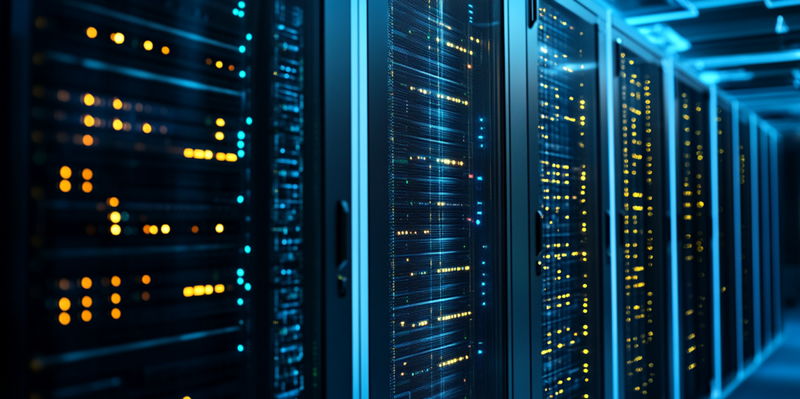The growing intersection of artificial intelligence (AI) and data centers has illuminated a pressing challenge: balancing the increasing power consumption needs with sustainability goals. As AI proliferates across various industries such as healthcare, finance, manufacturing, and agriculture, data centers bear the brunt of this expansion, grappling with the need for greater efficiency and a more sustainable operational model. AI advancements are accelerating the need for data storage, computational power, and real-time processing capabilities, putting immense pressure on existing data infrastructures to evolve rapidly.
The Backbone of Modern Digital Infrastructure
Data centers are undeniably the backbone of modern digital infrastructure, housing the immense computational power needed to process, store, and manage the vast quantities of data generated by AI applications. According to estimates from the International Energy Agency, data centers worldwide consumed between 240 and 340 TWh of electricity in 2022, making up about 1-1.3 percent of the global electricity demand. This already significant consumption is expected to rise sharply, with projections indicating that by 2030, data centers could account for up to 8 percent of total global energy consumption.
Countries like the United States, China, and European Union nations already see their data centers consuming between 2-4 percent of their total electricity. In India, this figure stands at around 2 percent, but it’s anticipated to increase significantly as the country further integrates emerging technologies like 5G, the Internet of Things (IoT), and advanced AI applications. The rapid integration of these technologies calls for a reevaluation of current infrastructure and an urgent need for expansion and technological innovation in data centers to keep pace with rising demands without compromising sustainability.
AI’s Impact on Energy Consumption
The energy-intensive nature of AI, particularly machine learning (ML), is creating substantial challenges for data centers striving to keep up with computational power requirements. Machine learning, computer vision systems, large language models, and neural networks rely on processing extensive datasets and running complex algorithms, resulting in continuous power demand. A striking example is highlighted by a report from OpenAI, which revealed that training a single AI model can consume over 300,000 kWh of electricity, equating to the annual power consumption of around 100 households.
AI workloads often require specialized hardware, such as Graphics Processing Units (GPUs) and Tensor Processing Units (TPUs), which further add to the high energy consumption. Training sophisticated generative AI models like GPT-4 involves processing vast datasets with thousands of GPUs, pushing data centers to not only expand their capacity but also deal with escalating electricity consumption. While advancements in hardware and software efficiency exist, they only provide some relief. The overall trend indicates a substantial increase in energy usage directly linked to AI demands, necessitating innovative solutions to maintain both performance and energy efficiency.
The Need for Expanded Data Storage
Data’s role as the driving force behind AI advancements underscores the critical need for increased data storage capacity. AI models, ever-evolving, demand more granular and voluminous data, presenting an ongoing storage challenge. Efficient and sustainable data management is essential for the long-term success of AI, transforming this need from a mere issue of storage to a strategic imperative. Although India currently accounts for 20 percent of global data production, it possesses merely 3 percent of the world’s data center capacity—a stark indication of the pressing need for infrastructure expansion in the face of exponentially growing data volumes.
Additionally, AI workloads generate significant heat, further complicating the operational landscape of data centers. Traditionally, air-cooled systems have dominated, but there’s a noticeable shift toward more energy-efficient cooling alternatives such as liquid cooling and immersion cooling systems. These advanced cooling technologies are becoming increasingly critical as AI capabilities and workloads evolve, necessitating continuous innovation to maintain energy efficiency while handling the increased thermal output associated with AI processes.
Continuous Operation and Sustainability Concerns
The continuous operation of servers required to provide real-time AI processing results in minimal downtime, exacerbating existing energy consumption patterns and raising serious sustainability concerns. These challenges are especially pronounced in regions where access to power is becoming a limiting factor for data center operations. For instance, the lead time to power a data center in Northern Virginia, USA, exceeds three years, illustrating the critical need for efficient and sustainable power solutions.
In light of these challenges, the transition to renewable energy sources has taken on new urgency. AI-driven workloads, which necessitate reliable and sustainable energy sources, have prompted many tech giants and data center operators to explore and invest in energy-efficient and renewable solutions. Utilizing wind, solar, and other round-the-clock renewable energy sources not only mitigates the environmental impact of data centers but also offers cost-effective power supplies that can enhance overall profitability, presenting a win-win solution for the industry.
Renewable Energy Solutions
The expanding integration of artificial intelligence (AI) and data centers has highlighted a significant challenge: balancing the increasing power demands with sustainability objectives. AI is becoming more prevalent across sectors like healthcare, finance, manufacturing, and agriculture, placing considerable pressure on data centers. These facilities must strive for greater efficiency and a more eco-friendly operational model. As AI technology advances, the demand for data storage, computational power, and real-time processing capabilities surges, intensifying the pressure on current data infrastructures to quickly adapt and evolve. To address these challenges, data centers are exploring innovative solutions to enhance energy efficiency and incorporate renewable energy sources. Additionally, leveraging AI technology itself can optimize cooling systems, monitor energy usage, and predict future power requirements, contributing to a more sustainable and efficient data processing environment. This balancing act between meeting AI’s growing technological requirements and achieving sustainability goals is crucial for the future of data centers.

